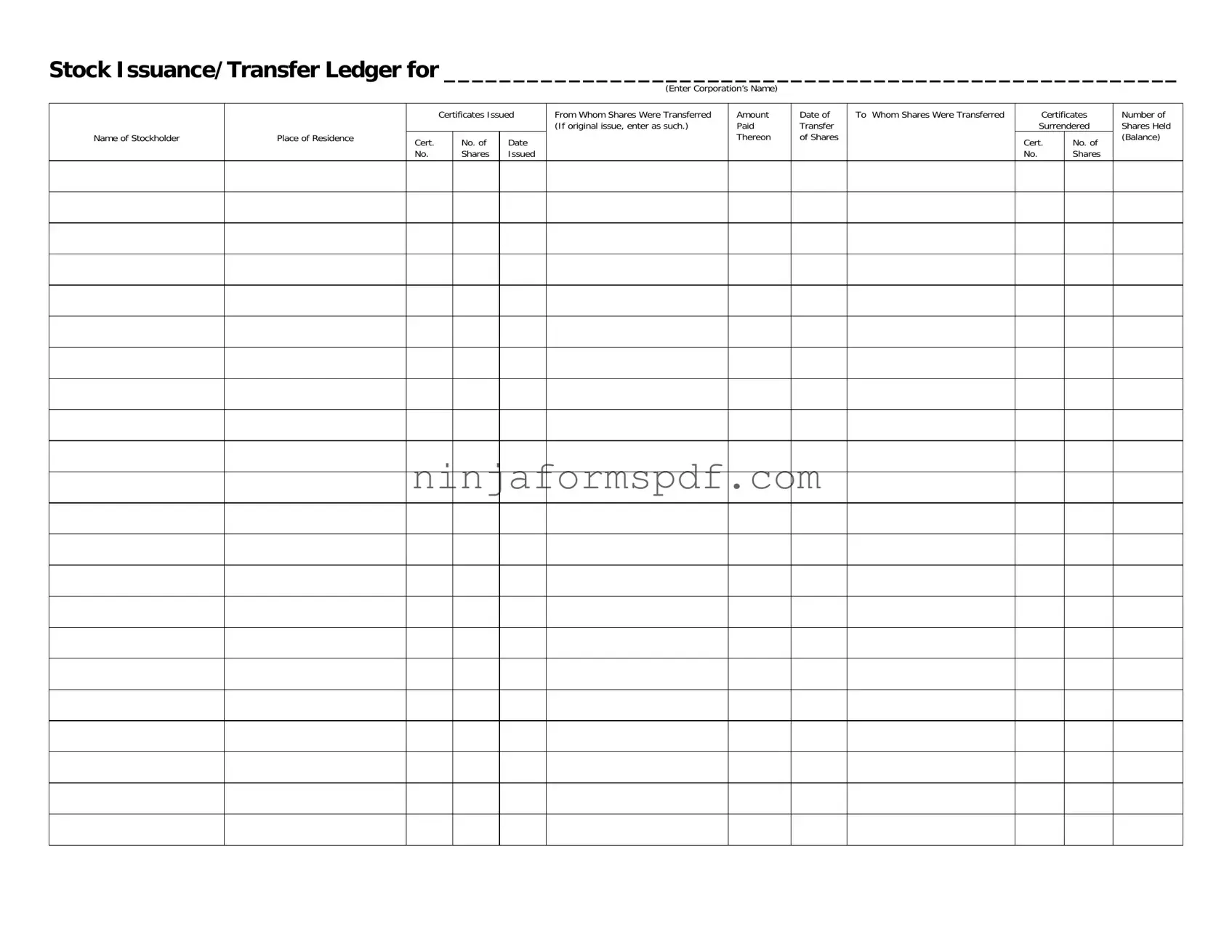What is a Stock Transfer Ledger?
A Stock Transfer Ledger is a document used by corporations to record the issuance, transfer, and current ownership of the company's stock. It includes detailed information such as the stockholder's name, place of residence, certificate numbers, the number of shares issued or transferred, payment amounts, and the balance of shares held by each stockholder.
Why is it important to maintain a Stock Transfer Ledger?
Maintaining a Stock Transfer Ledger is crucial for several reasons. It ensures accuracy in the record-keeping of a corporation’s stock ownership, facilitates the transfer of stock between parties, helps in verifying shareholder eligibility for dividends and voting rights, and is essential for compliance with legal and regulatory requirements.
Who should fill out the Stock Transfer Ledger?
Typically, the responsibility of filling out and updating the Stock Transfer Ledger falls on the corporation's secretary or another designated official within the company. These individuals ensure that the ledger is accurately updated with each transaction involving the issuance, transfer, or redemption of stock.
How are shares transferred using the Stock Transfer Ledger?
Shares are transferred on the ledger by recording the transferor (from whom shares were transferred) and the transferee (to whom shares were transferred), along with the date of transfer, certificate numbers, and the number of shares transferred. The ledger must also be updated to reflect the new balance of shares held by each stockholder after the transfer.
What information is needed to complete a Stock Transfer Ledger?
To complete a Stock Transfer Ledger, information required includes the name of the stockholder, their place of residence, details of the stock certificates (such as certificate numbers and the number of shares), the issuance or transfer dates, details of the transaction (including from whom and to whom shares were transferred), amounts paid, and the current number of shares held.
Can the Stock Transfer Ledger be maintained electronically?
Yes, a Stock Transfer Ledger can be maintained electronically. Many corporations choose to use digital record-keeping systems for convenience, accuracy, and ease of access. However, it's essential to ensure that the electronic system used complies with applicable laws and regulations regarding record-keeping and privacy.
What happens if there are discrepancies in the Stock Transfer Ledger?
If discrepancies are discovered in the Stock Transfer Ledger, it's imperative to investigate and resolve them promptly. Discrepancies might include errors in the number of shares recorded, incorrect shareholder information, or missing transaction details. Resolution may involve correcting record errors, updating information, or consulting with involved parties to verify transaction details.
Is access to the Stock Transfer Ledger restricted?
Access to the Stock Transfer Ledger is typically restricted to authorized personnel within the corporation, such as officers or designated record keepers. This restriction is necessary to protect shareholder privacy and ensure the integrity of the stock ownership records. However, corporations might be required to provide access to legal authorities or during audits under certain circumstances.
How often should the Stock Transfer Ledger be updated?
The Stock Transfer Ledger should be updated immediately following any stock issuance, transfer, or redemption to ensure the ledger accurately reflects current stock ownership. Prompt updates are vital for maintaining the integrity of the corporation's stock records and complying with legal and regulatory obligations.

